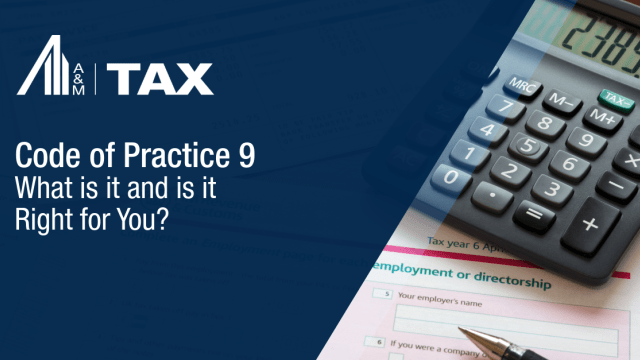State Tax Opportunities: Is There Green in Going Green?
Continuing with our series on tax issues relating to green energy, this week we scratch the surface on a wide array of often overlooked state and local tax credits, rebates, grants and loans available to those who “go green” strategically. As state and local governments increasingly promote the development of renewable and low-emission energy solutions, thoughtful investments today may yield “green” results for the corporate bottom line for years to come. These state benefits are in addition to the .
Corporate Tax Credits and Deductions
Several states have authorized state corporate tax credits and enhanced deductions for investments in solar, wind, biomass and other renewable technology. These benefits are available for a variety of expenditures, including energy production, energy conservation and other green investments. As one example, North Carolina’s renewable energy tax credit is available to companies that install solar, wind and hydroelectric projects in North Carolina. The North Carolina credit equals 35 percent of investment costs up to a maximum incentive of $2.5 million per installation. Arizona offers a non-residential solar and wind tax credit that provides participants with a 10 percent credit calculated based on eligible installed costs, up to a maximum credit of $25,000 per building or $50,000 total.
Some states, including Georgia, permit a credit for retrofits of existing buildings with improved efficient lighting systems. Other renewable energy production corporate tax credits and enhanced deduction programs have been authorized in Florida, Hawaii, Iowa, Kentucky, Maryland, Missouri, Montana, New Mexico, North Dakota, Ohio, Oklahoma, Oregon, South Carolina, Texas, Utah, Vermont and West Virginia.
Sales and Property Tax Incentives
While some varieties of state tax incentives have been waning, state sales tax incentives for energy production and construction are becoming more prevalent. An increasing number of states offer state sales tax exemptions or other incentives for qualified investments in renewable energy-related equipment, materials and manufacturing facilities. Examples include a 100 percent sales tax exemption for purchases of solar and wind equipment in Ohio, Arizona, Colorado and Iowa, among other states. Some states restrict sales tax exemptions to wind projects (Illinois, Nebraska, Maine) or to biomass (Georgia). In an attempt to attract a developing industry, South Carolina now offers a more narrow sales tax exemption for hydrogen fuel cell purchases.
Unlike most states, California does not generally allow a sales and use tax exemption on the purchase of most manufacturing equipment. However, to attract more green technology investment to the state, California recently enacted legislation that authorizes the California Alternative Energy and Advanced Transportation Financing Authority (CAEATFA), working with the State Board of Equalization, to approve sales and use tax exemptions on transfers of tangible personal property used for the design, manufacture, production or assembly of advanced transportation technologies or alternative source products, components or systems. Regulations and procedures governing the sales tax exemption application process are now being developed, and applications for this most recent expansion may not be accepted by CAEATFA until this summer. The new California alternative energy provisions are an extension of benefits previously offered only to manufacturers of zero emission vehicles.
Property tax exemptions of varying amounts are currently offered in 33 states for qualified renewable energy property. California has a property tax exclusion for solar energy systems for up to 100 percent of the value for systems installed between 2009 and 2016. Texas’s renewable energy systems property tax exemption provides a 100 percent property tax exemption for several varieties of renewables.
Rebates
Rebates account for the majority of the incentive programs available for corporations and are currently available in 36 states. Green rebates often extend beyond the standard renewable energy tax incentive categories of energy production and construction. Rebates are available for solar projects, industrial efficiency, wind and other renewables. By way of example, Arizona’s EarthWise Solar Energy program allows an incentive of up to $250,000 for solar projects. Some state utility companies provide their electricity consumers with a rebate for electricity they produce to offset their own consumption from the grid. With new state rebates being introduced nearly every week, taxpayers will be challenged to stay current on all available opportunities.
Energy Efficiency and Pollution Control
State incentives are not limited to the construction of renewable energy facilities and production of energy with renewable technologies. States also provide corporations with financial rewards for using energy efficiently and reducing pollutants. Rebates are offered for the use or installation of efficient technologies, including energy-efficient water heaters and lighting in commercial buildings. Some of these incentives are small, while others may be worth hundreds of thousands of dollars to large companies. This is a great example of the type of incentives that might be available to companies that had no idea valuable green incentives could be available to them.
Even seemingly non-green facilities can benefit from some energy incentives. There are incentives available for making pollution control modifications to existing properties. Arizona’s pollution control tax credit provides a 10 percent income tax credit for real or personal property used to control or prevent pollution. The Ohio Air Quality Development Authority offers up to a 100 percent exemption from taxes for tangible personal property, real property, corporate franchise, and sales and use for projects that improve air quality.
Grants, Loans and Bonds
Twenty-six states issue grants for various corporate renewables endeavors, such as for energy production incentives and for energy efficiency and renewable facility construction. Delaware offers research and development grants for wind, solar and other renewables worth up to 35 percent of qualifying costs up to $250,000.
State loans, now offered in 22 states, are available for renewable energy projects, calculated by the unit, the watt and the project for investments such as renewable energy resource development and conservation. Terms vary, but many state loans for renewables can allow for quite large sums to be borrowed. One of the leading states in renewable project loans is Pennsylvania, which provides loans of up to $2,000,000 for certain renewable projects. Along with often generous amounts of financing, states are also providing favorable interest rates and payment schedules.
Bonds have not yet emerged as a major player in the domain of state tax incentives for renewable energy. Idaho, Illinois and now California provide bond financing for eligible corporate taxpayers. These state programs are limited in their scope and are given to companies to finance the construction of qualifying renewable projects.
Production Incentives and Industry Support
With 16 states providing industry support incentives, such as investment tax credits, job creation incentives and business expansion incentives, now may be an optimal time for a company to expand its facilities and workforce in renewables. Oregon, a leading state in this area, offers tax credits worth up to $20 million for qualified renewable energy manufacturing projects.
Some states offer incentives for the production of energy via renewable or efficient means within the state. California has several feed-in tariffs. Although self-generation policies often apply to individual residences rather than corporations, some public utilities do offer corporations incentives for offsetting their own energy by running on self-generated power.
Coordination of State Incentives with Federal and Local Programs
Federal, state and local government programs can provide different incentives for the same energy or efficiency projects. States have the authority to permit municipalities to administer tax incentives at the local level. For instance, Nevada allows local governments to use special property assessment methods for renewable project financing. Adding state and local incentives to the plethora of federal incentives that were created or expanded by the American Recovery and Reinvestment Act of 2009 reduces corporate tax liabilities on many fronts.
Alvarez & Marsal Taxand Says:
Time is of the essence. A number of the state and local incentives are set to expire within the next few years and, as a result of budgetary limitations, such programs may not be renewed. Thus, now may be a great time to maximize returns on investments in renewable technologies.
Notwithstanding the expiration of some programs, a number of state and local jurisdictions have proposed new or modified green incentive programs that may yield even greater value to your business than expiring programs. While it remains to be seen how many proposals will ultimately be adopted, the trend is an increase in offers of lucrative incentives, particularly to green manufacturing companies, to attract the next potential growth industry to their state.
Remember, even though you may think green incentives could not apply to your business, upon examination you might be pleasantly surprised to find a green nugget tailor-made for you.
Author
Anthony Fuller
Managing Director, San Francisco
415-490-2256
|
Eric Phillips, Senior Director, and Lindsey Hill, Associate, contributed to this article
For More Information on this Topic, Contact:
Craig Beaty
Managing Director, Houston
713-221-3933
|
Benjamin Diaz
Managing Director, Miami
305-704-6650
|
John Easterday
Managing Director, Chicago
312-288-4015
|
Michael Lippman
Managing Director, Washington, D.C.
703-852-5048
|
Brian Pedersen
Managing Director, Seattle
206-664-8911
|
Matthew Polli
Managing Director, Atlanta
404-260-4078
|
Donald Roveto
Managing Director, New York
212-763-9632
|
Carolyn Campbell Shantz
Managing Director, Houston
713-221-3919
|
Other Related Issues:
| 02/18/10 | |
| 01/26/10 | |
| 03/10/09 |
Feedback:
We would like to hear from you.
Disclaimer
As provided in Treasury Department Circular 230, this publication is not intended or written by Alvarez & Marsal Taxand, LLC, (or any Taxand member firm) to be used, and cannot be used, by a client or any other person or entity for the purpose of avoiding tax penalties that may be imposed on any taxpayer.
The information contained herein is of a general nature and based on authorities that are subject to change. Readers are reminded that they should not consider this publication to be a recommendation to undertake any tax position, nor consider the information contained herein to be complete. Before any item or treatment is reported or excluded from reporting on tax returns, financial statements or any other document, for any reason, readers should thoroughly evaluate their specific facts and circumstances, and obtain the advice and assistance of qualified tax advisors. The information reported in this publication may not continue to apply to a reader's situation as a result of changing laws and associated authoritative literature, and readers are reminded to consult with their tax or other professional advisors before determining if any information contained herein remains applicable to their facts and circumstances.
About Alvarez & Marsal Taxand
Alvarez & Marsal Taxand, an affiliate of Alvarez & Marsal (A&M), a leading global professional services firm, is an independent tax group made up of experienced tax professionals dedicated to providing customized tax advice to clients and investors across a broad range of industries. Its professionals extend A&M's commitment to offering clients a choice in advisors who are free from audit-based conflicts of interest, and bring an unyielding commitment to delivering responsive client service. A&M Taxand has offices in major metropolitan markets throughout the U.S., and serves the U.K. from its base in London.
Alvarez & Marsal Taxand is a founding member of Taxand, the first global network of independent tax advisors that provides multinational companies with the premier alternative to Big Four audit firms. Formed in 2005 by a small group of highly respected tax firms, Taxand has grown to more than 2,000 tax professionals, including 300 international partners based in nearly 50 countries.
To learn more, visit www.alvarezandmarsal.com or www.taxand.com.
© Copyright 2010 Alvarez & Marsal Holdings, LLC. All Rights Reserved.
Alvarez & Marsal | 6th Floor | 600 Lexington Avenue | New York | NY | 10022



